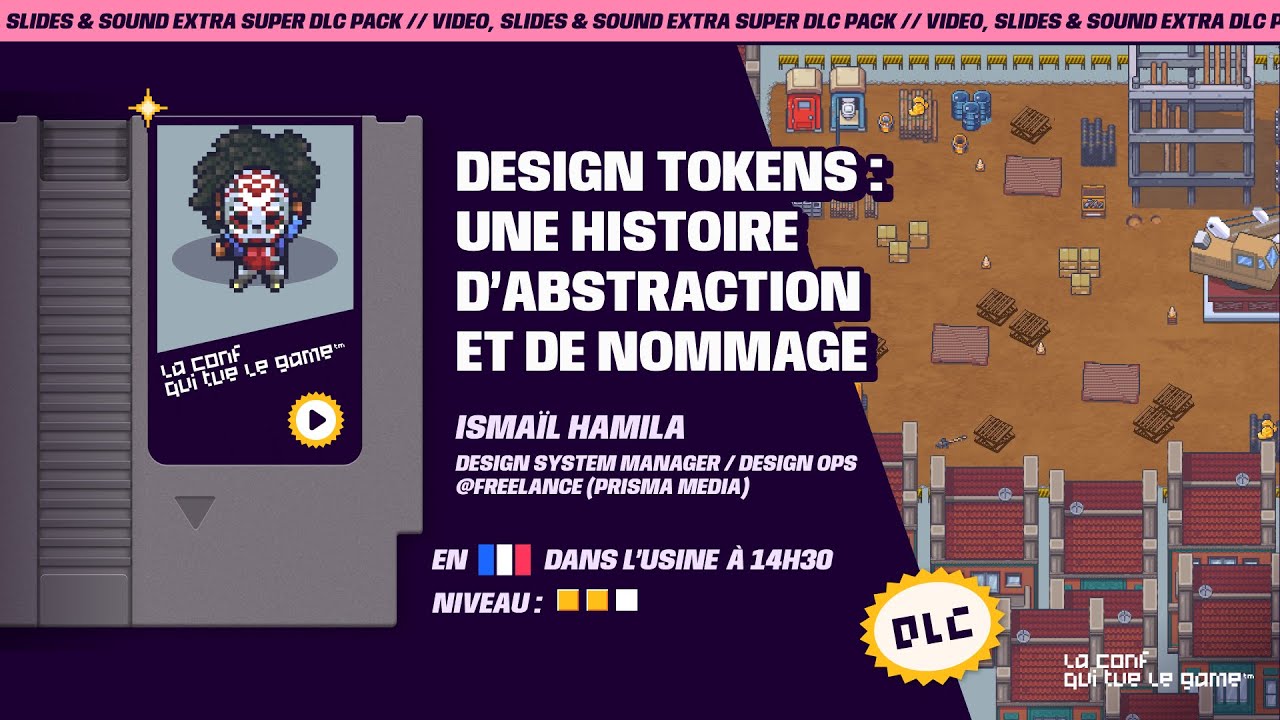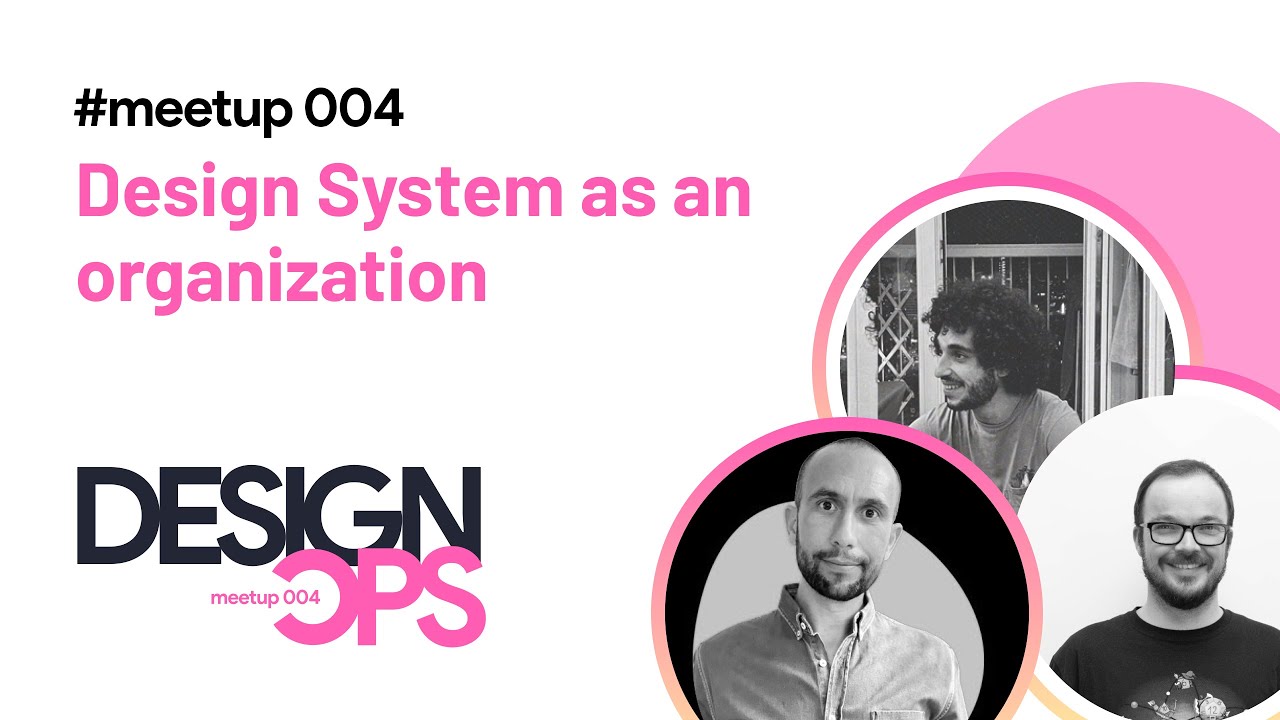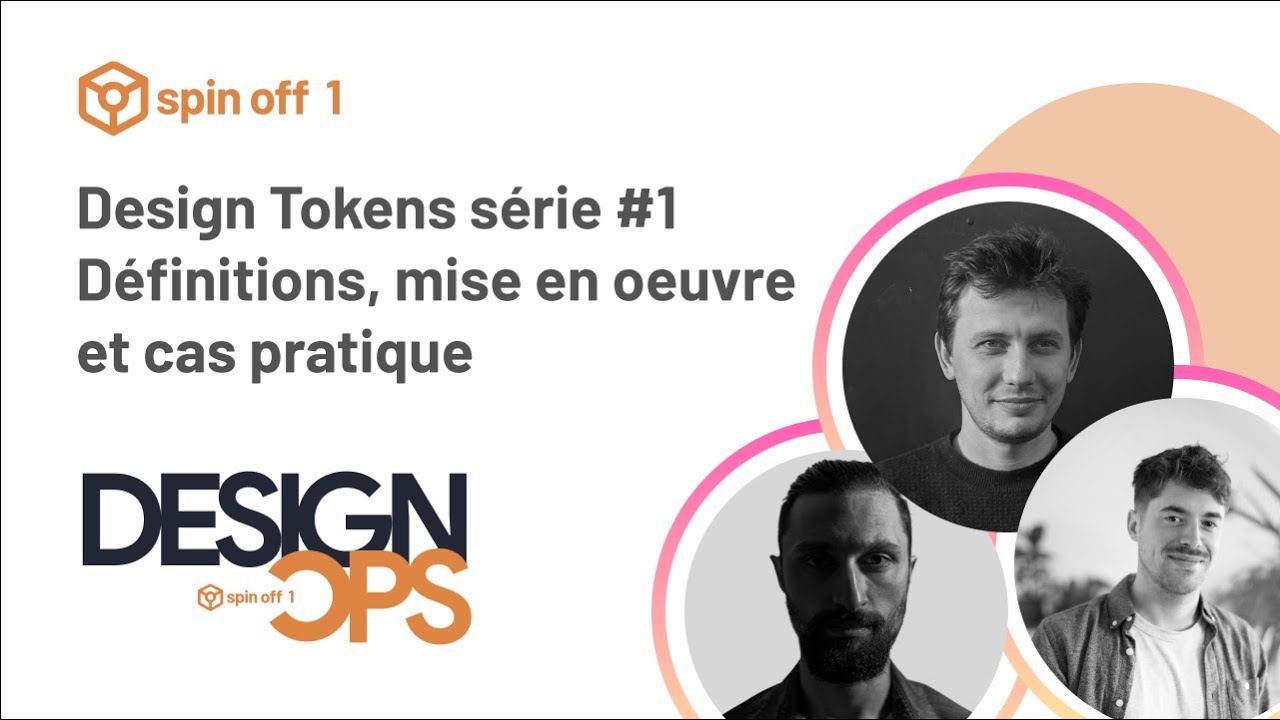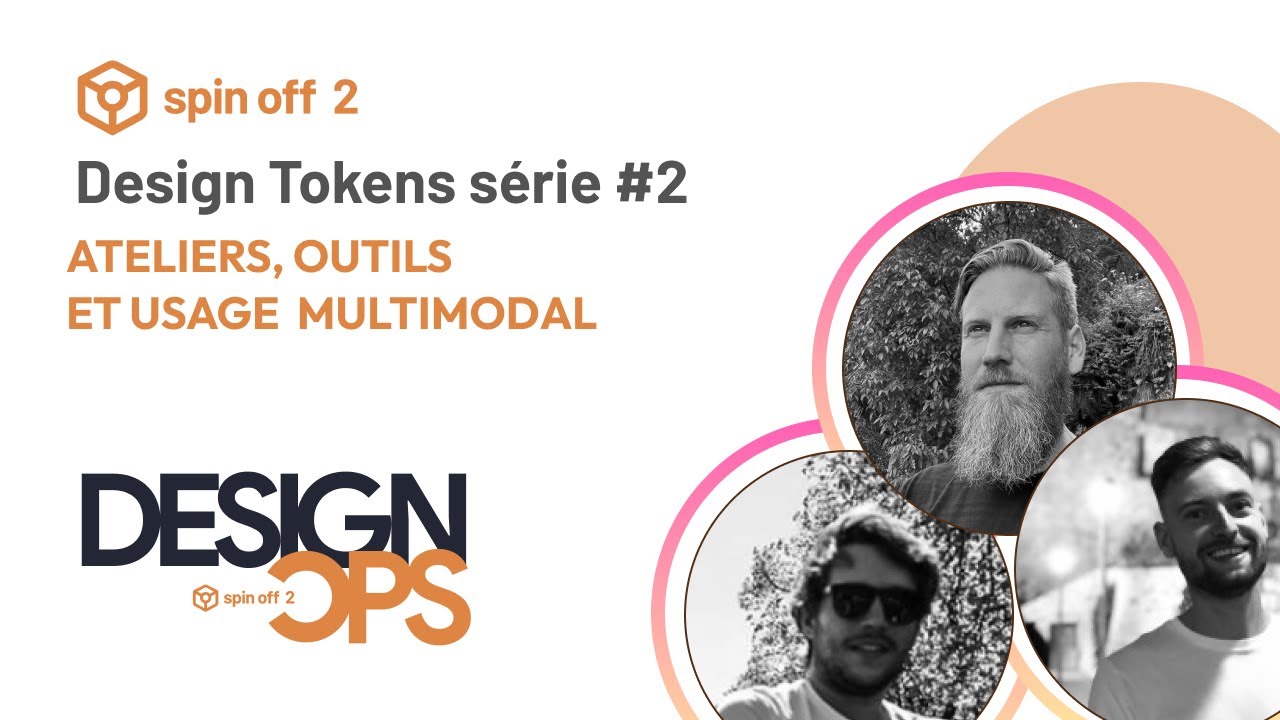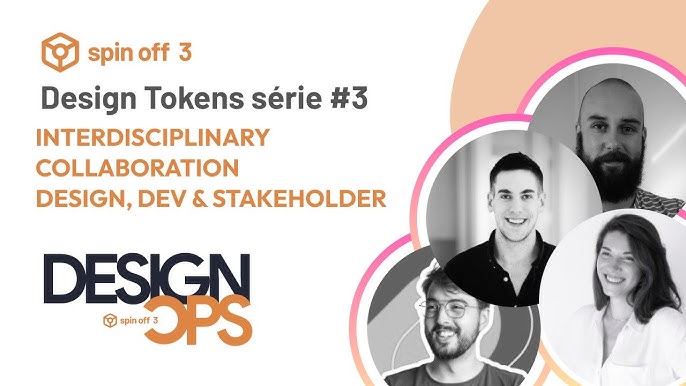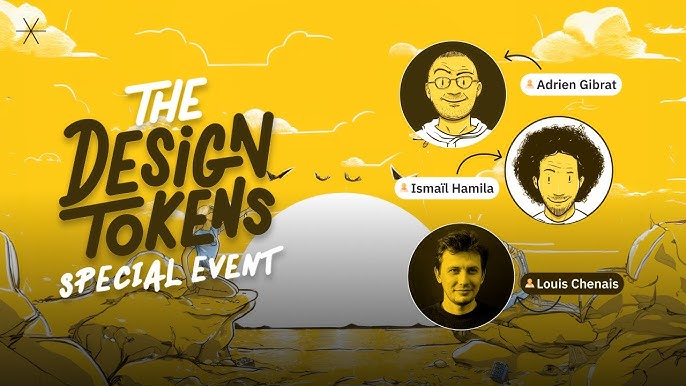The First Design Tokens Guide
An ambitious writing project for the design community.
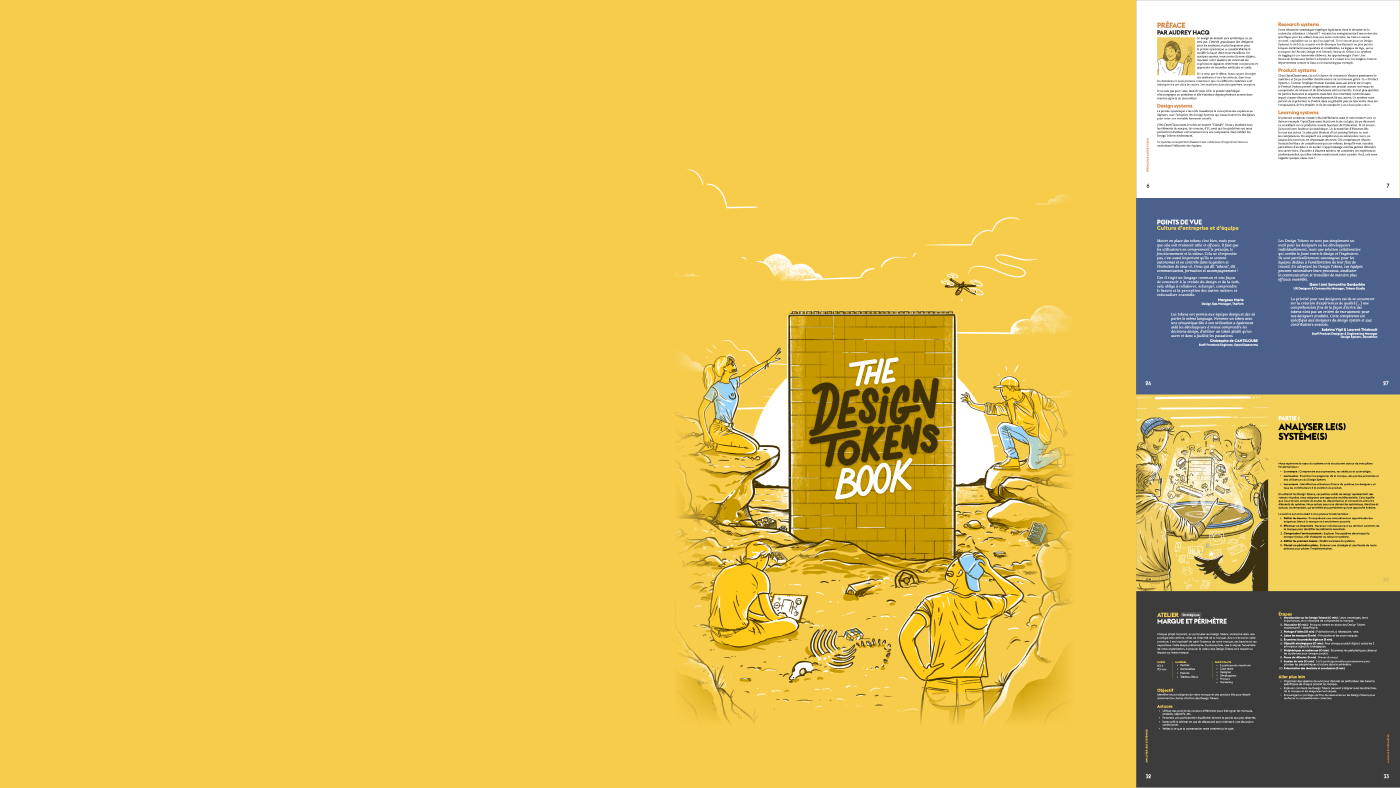 < Prev
Case 01 / 06
Next >
< Prev
Case 01 / 06
Next >
Context & Goals
As a Design System Manager since 2020, I’ve experienced the transformative power of design tokens in creating scalable and efficient systems. My journey began with early explorations in 2020 and practical implementations in 2021, culminating in a pivotal 2022 presentation at “La Conf Qui Tue Le Game,” where my insights on their theoretical and semantic foundations sparked widespread acclaim and reinforced the need for a structured guide on the topic.
Driven by a personal mission to share value with the community that has shaped my career, I embarked on the ambitious project of writing The Design Tokens Book. Beyond being a personal challenge—particularly as someone with dyslexia and concentration challenges—this endeavor represented an opportunity to contribute to something greater than myself. It was about empowering professionals, bridging the gap between theory and practice, and creating a reliable resource for the global design and development community.
The goal of this project was multifaceted: to empower professionals—designers and developers—with a robust operational framework for adopting and scaling design tokens in their organizations; to foster innovation by blending theory with actionable methodologies, offering practical tools like workshops and real-world business cases that drive immediate impact; to create a legacy by developing the first comprehensive book on design tokens, setting a foundation for this emerging field; and to build community by sharing knowledge generously, contributing to a larger narrative, and inspiring others to explore the transformative potential of design systems. This was not merely about writing a book—it was a call to action for the design community to think bigger, collaborate smarter, and use design tokens as a strategic tool to drive innovation and efficiency.
Team & Stakeholders
- 1 Illustrator (Minastrie)
- 1 Co-author/Contributor (Senior Developer / Agency)
- 1 Head of Marketing (Agency)
- 1 Agency Director
Timing
- 1 Year
- April 2023-2024
Responsabilities
Director & Principal Author
- Writing and editing
- Book design direction
- Workshop development
- PR and marketing strategy
- Event organization
- Team collaboration
Problematic & Challenges
Writing The Design Tokens Book was an ambitious undertaking filled with personal and professional challenges. As the first book globally to tackle design tokens, the subject matter was both novel and uncharted. Transforming this niche, technical topic into an accessible and operational guide required building everything from scratch, without prior examples to draw from. Adding to this complexity, I was neither an experienced writer nor someone who had authored articles or books before. This lack of a foundation made the process both daunting and an incredible opportunity for growth.
Collaboration presented its own hurdles. Working with external stakeholders—including an illustrator, a co-author, and an agency—demanded alignment on vision and delivery. Managing communication, expectations, and contributions while ensuring the project moved forward under tight deadlines was a significant balancing act. The agency partnership, in particular, proved challenging, as their limited involvement led to gaps in execution that I had to fill independently.
Finally, the project demanded exceptional project management. From structuring the book’s framework and coordinating contributors to maintaining consistency across workshops, illustrations, and case studies, each step required meticulous attention to detail. Balancing these elements while navigating personal challenges made this journey not just about producing a book but about pushing boundaries and discovering new capabilities.
Timeline
-
Q1_Global Strategy, Framing & Preparation
- Defined vision, goals, and audience.
- Outlined scope and reach of the book.
- Created the initial book summary and workshop listing.
- Developed a preliminary timeline for deliverables.
- Selected and onboarded the illustrator.
- Identified potential contributors and experts for business cases and interviews.
- Designed the structure for expert contributions (questionnaire or interview format).
- Established project management tools and processes for collaboration.
-
Q2&3_Co-Creation & Content Development
- Collaborated with Minastrie to co-create branding and illustrations.
- Directed and approved all illustration work, ensuring alignment with book content.
- Drafted 17 out of 19 book chapters, proofreading and editing the remaining 2.
- Designed and tested 11 workshops aligned with book content.
- Finalized the format and layout for workshops to accompany the book.
- Developed and validated three business cases:
- Conducted interviews with companies like Thales, Decathlon, and OpenClassrooms.
- Integrated real-world operational details and challenges into case studies.
- Curated questions for the “Point of View” sections.
- Conducted interviews with references and industry experts.
- Edited and formatted expert contributions for inclusion in the book.
- Incorporated iterative feedback on draft content from early readers or reviewers.
-
Q4_Finalization & Pre-Launch Execution
- Conducted comprehensive proofreading and editorial adjustments for all formats.
- Finalized the design and layout for EPUB, PDF, and paperback versions.
- Organized a marketing campaign:
- Developed a digital strategy for pre-launch buzz (social media, blog posts, etc.).
- Created promotional materials (mockups, banners, and trailers).
- Coordinated a dotation plan to provide stakeholders and contributors with copies.
- Managed the launch strategy:
- Negotiated distribution on Amazon and other digital platforms.
- Planned initial promotional events and outreach campaigns.
- Finalized Meetup planning:
- Scheduled dates, venues, and speakers for three Design Tokens Meetup Series events.
- Created content outlines for each meetup.
-
Q5_Engagement & Post-Launch Feedback
- Executed the “Design Tokens Meetup Series” in Paris:
- Event 1: Specify & Carrefour.
- Event 2: Tokens Studio & France TV.
- Event 3: Supernova & The Fork.
- Co-organized two meetups in Marseille and Lyon with Laptop and Friends of Figma.
- Collected and analyzed feedback from readers:
- Conducted surveys to identify strengths, gaps, and areas for improvement.
- Captured testimonials from industry experts and key stakeholders.
- Executed the “Design Tokens Meetup Series” in Paris:
Solutions
A Trailblazing Endeavor
The Design Tokens Book was a pioneering achievement—the first-ever guide dedicated entirely to the implementation and operationalization of design tokens. This groundbreaking effort addressed a critical gap in the design and development ecosystem, providing a unified methodology for organizations at various stages of design system maturity.
The book's foundation lay in its design system maturity model, which structured its content around the progression of understanding, creating, and scaling design tokens. By guiding readers from basic principles to advanced strategies, the book established itself as a transformative tool for both beginners and seasoned professionals. Its goal was clear: empower teams to centralize and automate design decisions, ensuring visual and technical coherence across digital products.
Accessibility was at the heart of the book’s distribution strategy:
- A free digital edition (PDF/EPUB) was made available to ensure widespread accessibility and to foster community engagement.
- A paid paperback edition on Amazon catered to professionals seeking a physical reference for deeper integration into their workflows.
Balancing free and paid models allowed the book to maximize its reach while still positioning itself as a premium resource. This approach not only democratized knowledge but also solidified The Design Tokens Book as a reference work in a nascent field.
The challenges were substantial. Writing a book on an unexplored topic required defining not just the content but the language and frameworks that would shape how the subject was understood. The process involved constant iteration, balancing academic rigor with practical application, and navigating the complexities of creating something both universal and specific. However, these efforts paid off, positioning The Design Tokens Book as the definitive resource for professionals eager to leverage design tokens to their full potential.
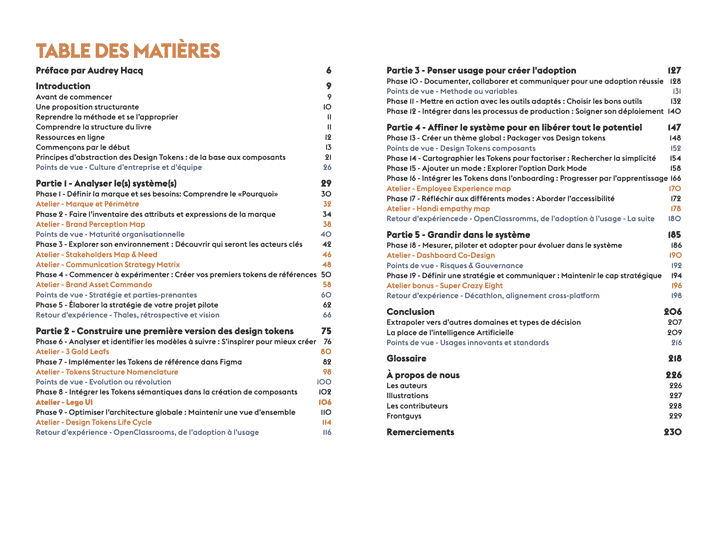
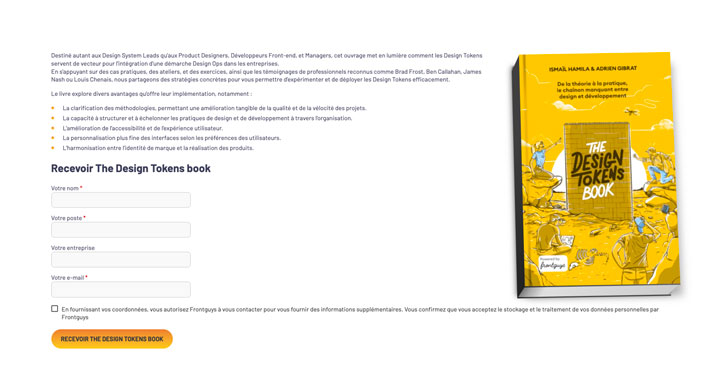
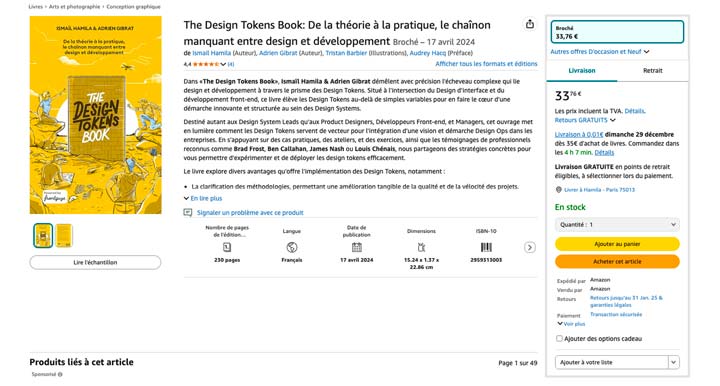

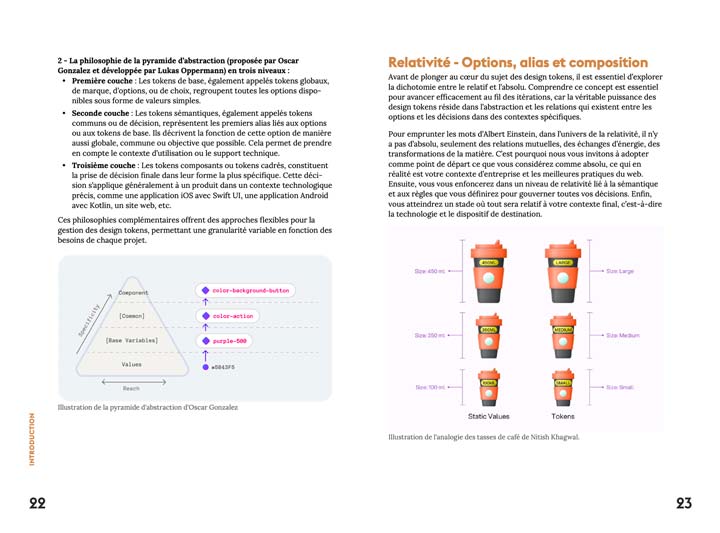
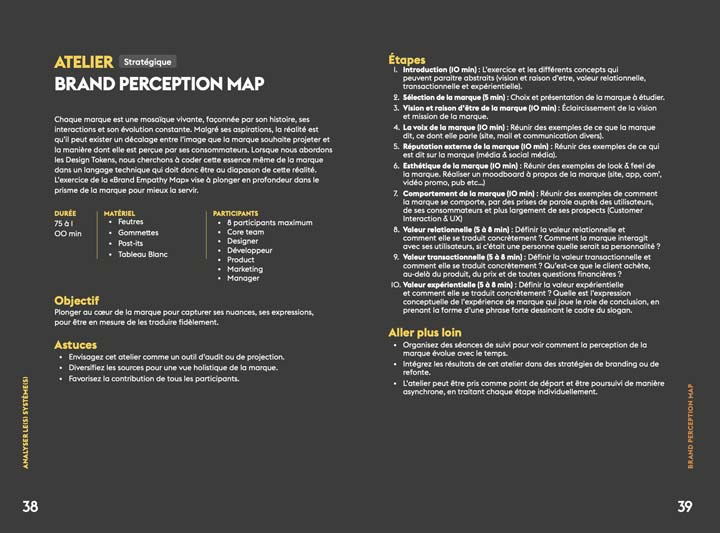
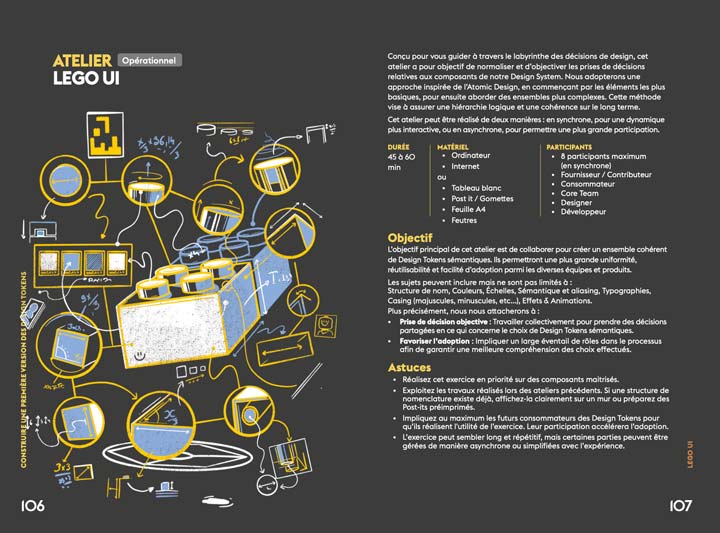
Bridging Theory and Practice
A key ambition of The Design Tokens Book was to move beyond theory and provide actionable methodologies for implementing design tokens. This vision materialized through the creation of 11 workshops, each aligned with the book’s structured phases, offering a step-by-step guide for organizations at any stage of their design system journey.
These workshops served as the practical counterpart to the book’s conceptual content, enabling teams to bridge the gap between abstract ideas and operational execution. Topics ranged from defining brand attributes and creating foundational tokens to implementing semantic tokens, scaling for accessibility, and incorporating Design Ops principles. This included the establishment of tools and practices for onboarding, skills development, and knowledge management, ensuring that design and development teams were equipped to integrate tokens seamlessly into their workflows.
Central to this effort was an emphasis on communication and documentation, recognizing that design tokens are most effective when they are well-documented and easily understood. Workshops were crafted not only to solve immediate challenges but also to create a foundation for ongoing education and system evolution, ensuring teams could onboard new members effectively and maintain system cohesion over time.
Significant effort was invested in testing and iterating the workshops with industry professionals. Feedback loops ensured that each workshop was grounded in real-world applicability and addressed genuine challenges faced by design and development teams. These iterations also enriched the book’s content, making it a living, practical resource rather than a static, theoretical guide.
Ultimately, the workshops showcased how design tokens, coupled with Design Ops practices, could transform workflows, improve collaboration, and streamline decision-making. By incorporating principles of onboarding, skill-building, and system documentation, the book provided a comprehensive roadmap for teams to effectively integrate and scale tokens within their design systems.
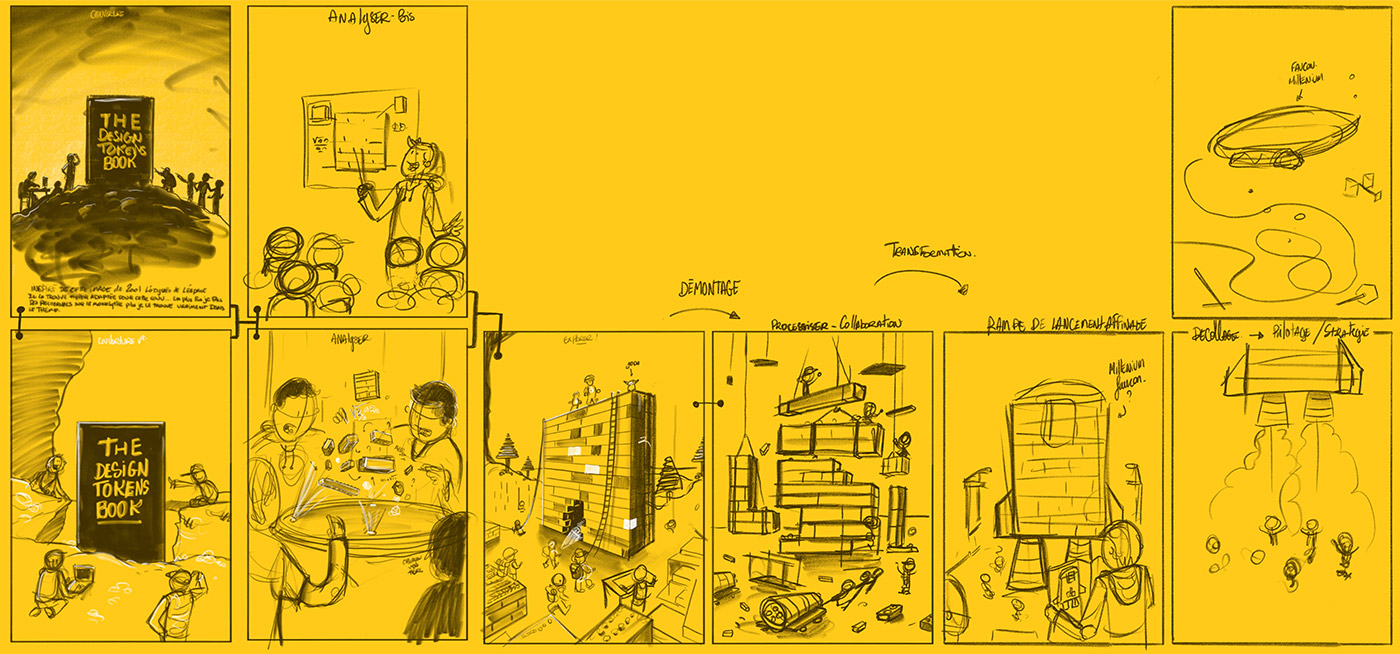
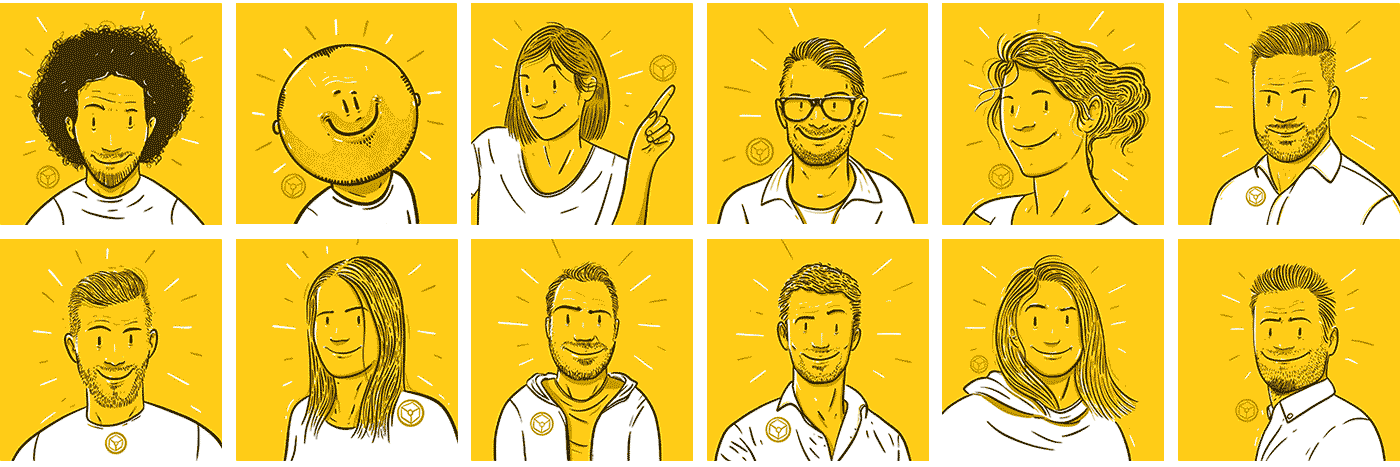
Amplifying Expertise Through Business Cases
To ensure the book wasn’t just a theoretical exploration, real-world business cases became a cornerstone of its value proposition. Featuring Thales, Decathlon, and OpenClassrooms, these case studies highlighted how design tokens could be operationalized in diverse organizational contexts.
Each business case was carefully curated to provide actionable insights. Thales, for example, showcased how design tokens could address complex technical ecosystems and enhance consistency across large-scale enterprise projects. Decathlon’s contribution emphasized their application in highly dynamic retail environments, where design systems need to adapt to fast-changing consumer needs. Meanwhile, OpenClassrooms demonstrated how tokens can support scalable digital learning platforms, enabling personalized experiences for a global audience.
The process of developing these cases was highly collaborative. It involved conducting in-depth interviews with key stakeholders, analyzing their challenges, and distilling their experiences into clear, practical narratives. These cases weren’t just success stories—they were learning opportunities, illustrating both the wins and the hurdles of adopting design tokens.
In addition to the business cases, the book featured expert perspectives from leaders in the field. Contributors like Louis Chenais, Ben Callahan, Brad Frost, and James Nash brought unique viewpoints on strategic implementation and operationalization. Audrey Hacq, whose work and book Hackez le Design System laid the foundation for much of the design system discourse in France, completed the circle. Her involvement was particularly meaningful, as it was her pioneering efforts that inspired many—including the author—to dive deeper into design systems and their transformative potential.
By integrating these real-world examples and expert insights, The Design Tokens Book bridged the gap between abstract concepts and tangible outcomes. The business cases and perspectives served as inspiration and guidance for readers, showing how design tokens can be adapted to various industries and organizational scales. This approach reinforced the book’s commitment to providing not just knowledge, but also tools and strategies for application.
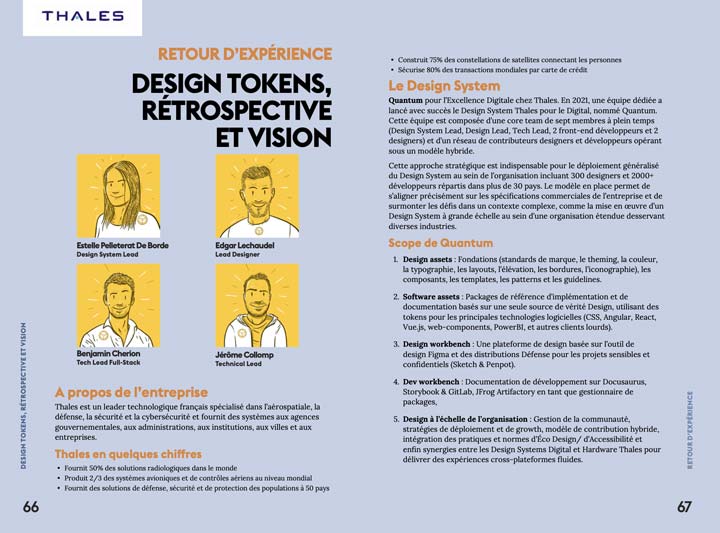
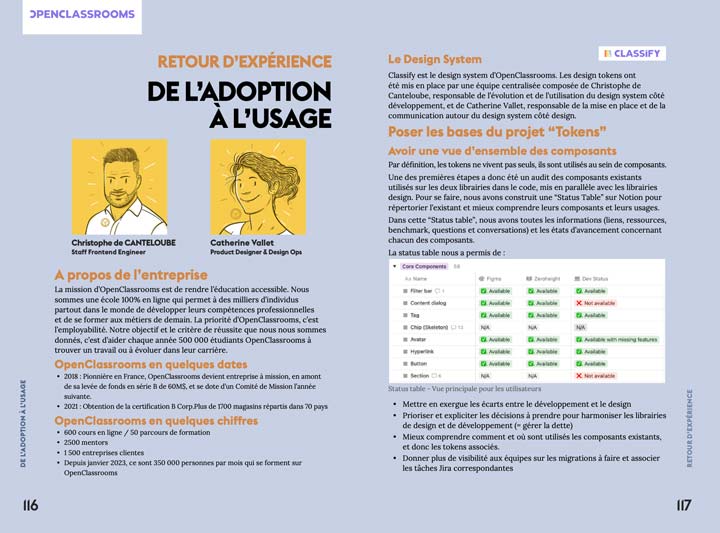
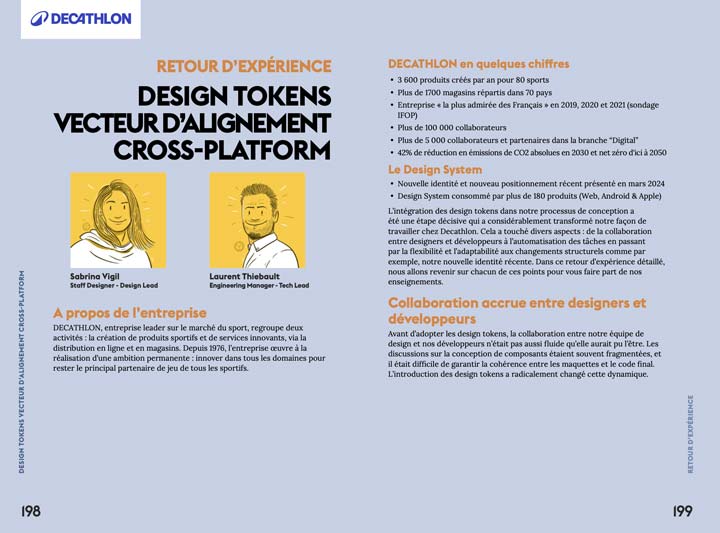
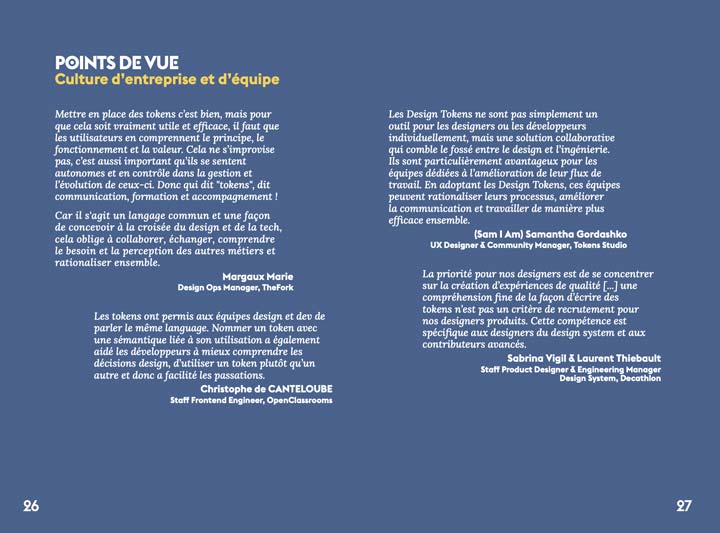
Building a Community of Practice
A key ambition of The Design Tokens Book was to move beyond theory and provide actionable methodologies for implementing design tokens. This vision materialized through the creation of 11 workshops, each aligned with the book’s structured phases, offering a step-by-step guide for organizations at any stage of their design system journey.
These workshops served as the practical counterpart to the book’s conceptual content, enabling teams to bridge the gap between abstract ideas and operational execution. Topics ranged from defining brand attributes and creating foundational tokens to implementing semantic tokens, scaling for accessibility, and incorporating Design Ops principles. This included the establishment of tools and practices for onboarding, skills development, and knowledge management, ensuring that design and development teams were equipped to integrate tokens seamlessly into their workflows.
Central to this effort was an emphasis on communication and documentation, recognizing that design tokens are most effective when they are well-documented and easily understood. Workshops were crafted not only to solve immediate challenges but also to create a foundation for ongoing education and system evolution, ensuring teams could onboard new members effectively and maintain system cohesion over time.
Significant effort was invested in testing and iterating the workshops with industry professionals. Feedback loops ensured that each workshop was grounded in real-world applicability and addressed genuine challenges faced by design and development teams. These iterations also enriched the book’s content, making it a living, practical resource rather than a static, theoretical guide.
Ultimately, the workshops showcased how design tokens, coupled with Design Ops practices, could transform workflows, improve collaboration, and streamline decision-making. By incorporating principles of onboarding, skill-building, and system documentation, the book provided a comprehensive roadmap for teams to effectively integrate and scale tokens within their design systems.
Results
The journey of creating The Design Tokens Book was an intense year-long endeavor that demanded immense personal sacrifice. It symbolized a deep commitment to advancing the understanding of design tokens, sharing knowledge, and fostering a stronger community. The project has become a source of pride, earning positive feedback from readers and establishing itself as a key reference on the subject. The growing demand for an English edition underscores its relevance beyond the French-speaking design community.
However, success did not come without challenges. Collaboration with the initial agency not only failed to contribute value—particularly in technical areas—but introduced significant difficulties. The partnership brought emotional strain and highlighted the critical importance of carefully selecting collaborators. This experience served as a harsh reminder that the quality of partnerships directly impacts both the final product and the well-being of those involved. These lessons are as much a part of the journey as the book itself.
Despite these hurdles, The Design Tokens Book achieved its mission of sparking conversations and providing practical tools for professionals in the design and development communities. While the first edition had its limitations, particularly in technical depth, it has laid a solid foundation for future editions to build upon.
Looking ahead, we embrace these lessons as opportunities for growth. The next step is the release of an English edition, which will refine the content, expand its accessibility, and continue to empower professionals worldwide.
More to come—we learn from our mistakes, evolve through our experiences, and will return soon with an enhanced second edition and an English version to continue the journey. Stay tuned!
Delivrables
- A Book (with 19 chapters)
- Workshops (11 operational guides)
- Branding and Visual Identity
- High-Quality Illustrations
- Business Case Studies (Thales, Decathlon, OpenClassrooms)
- Point of View Sections (Expert Contributions)
- Event Series (Paris, Marseille, Lyon)
